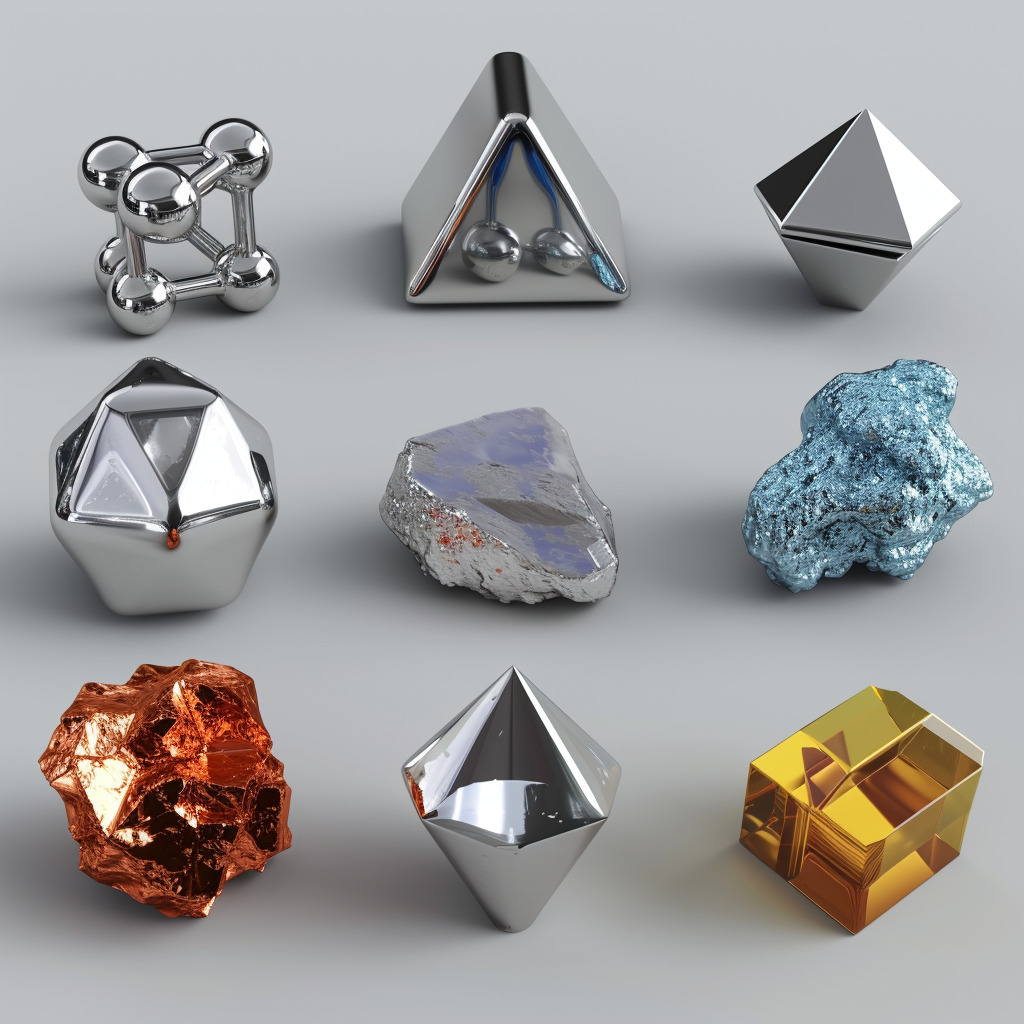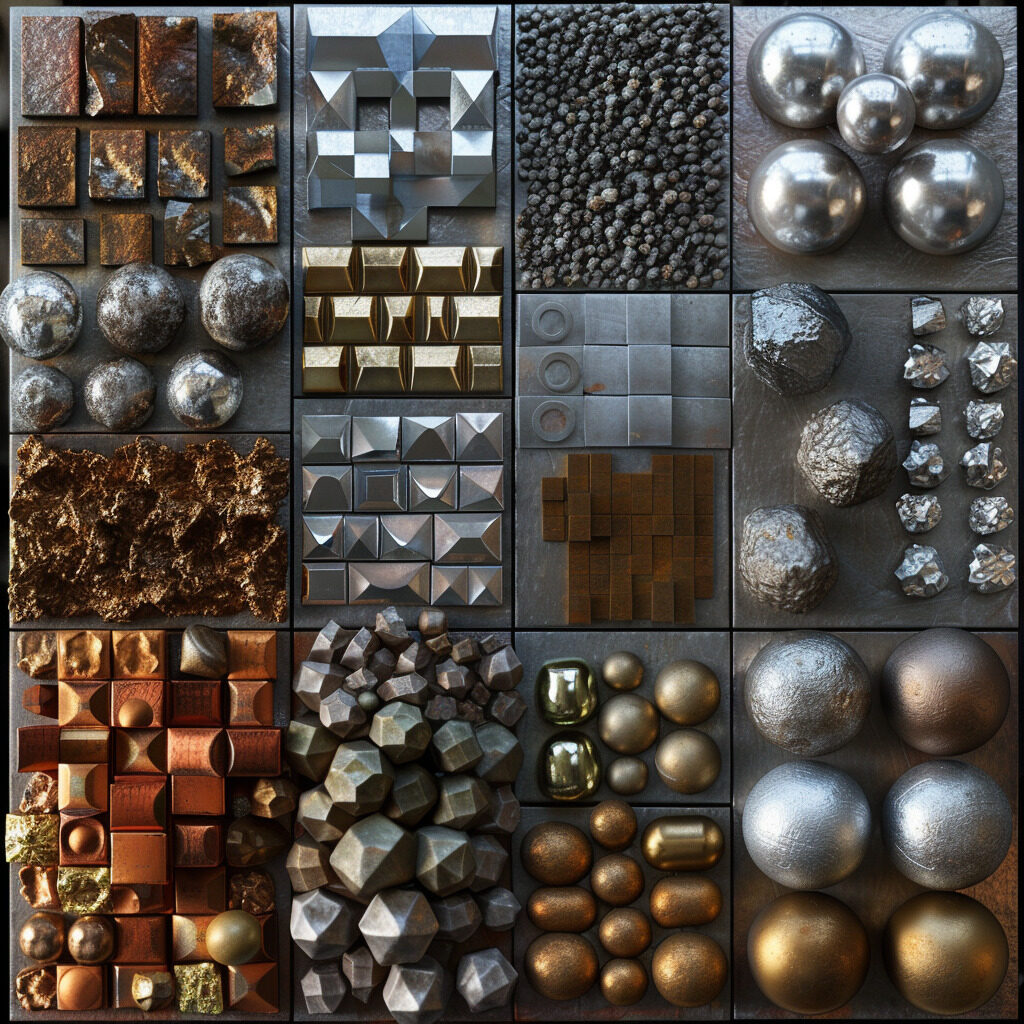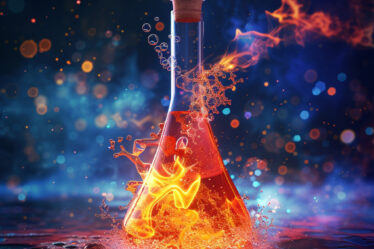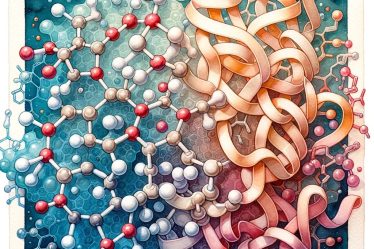
This blog will look closely at metals in the periodic system. Metals are everywhere, from the devices we use daily to the structures that make up our cities.
We’ll explore what makes metals unique, how they’re organized in the periodic table, and how they interact with other elements. This is a chance to understand more about the materials that play a crucial role in our world.
All you need to know about vitamins and minerals.
Periodic Table Metals: Key Takeaways
In a hurry? Don’t worry. Our critical takeaways on periodic table metals will give you a quick and easy summary of the main points:
🟠 Basics of Metals: Metals are shiny elements, good at conducting heat and electricity, and can be shaped easily. Common examples include iron, gold, and aluminum.
🟠 Arrangement of Metals in the Periodic Table: The periodic table groups metals based on shared characteristics and their electron structures, which helps predict how they will react chemically.
🟠 Metal Reactions: Metals can combine with other elements to form compounds like oxides, hydroxides, and carbonates. These reactions highlight the diverse chemical behaviors of metals.
If you find periodic table metals challenging, don’t worry! Personalized tutoring or interactive chemistry lessons make metals, non-metals, and semi-metals more straightforward. Explore more chemistry topics and broaden your knowledge with our free World of Chemistry blogs.
What are Metals?
Metals are essential to modern life, powering everything from buildings to smartphones. Their unique set of properties sets them apart from other materials and makes them indispensable.
Definition and Examples of Metals
Metals conduct heat and electricity well, are shiny, and we can shape them without breaking them. Unlike gases or liquids at room temperature, most metals are solid, except for mercury, which is liquid. Examples range from everyday metals like aluminum, widely used for packaging and in airplanes for its lightweight and durability, to precious metals like gold and silver, used in electronics and jewelry due to their conductivity and luster.
Physical and Chemical Properties of Metals
Metals are durable, shiny, and heavy. We can make them into wires or sheets useful for construction and manufacturing. On the chemical side, metals easily give up electrons, forming positive ions. This makes them reactive, especially with oxygen, leading to rust in iron or tarnish on silver. However, their ability to conduct electricity comes from the free electrons in their structure, making metals essential in electrical wiring and components.
Key Properties of Metals:
- Shiny luster: Metals have a distinctive shine or glow.
- High conductivity: Metals are excellent conductors of electricity and heat.
- Malleability and ductility: We can shape metals into sheets or wires without breaking.
Are you finding metals in the periodic system tricky? A chemistry tutor can provide personalized lessons tailored to your needs, making organic and inorganic chemistry understandable and enjoyable.
How are Metals Classified in the Periodic Table?
The periodic table organizes metals based on atomic structure and shared properties, providing a framework for understanding their behavior. This classification highlights the relationship between electron configuration and elemental properties, which is crucial for predicting chemical reactions.
The Periodic Table’s Groups and Periods of Metals
Metals are arranged into groups and periods, reflecting their electron configurations and chemical characteristics.
Groups are vertical columns that contain elements with similar properties due to their valence electron configurations. For example, Group 1 contains alkali metals, which are highly reactive due to having one electron in their outer shell. Group 2 holds the alkaline earth metals, which are slightly less reactive than alkali metals. The transition metals in the middle of the periodic table exhibit variable oxidation states and are known for their ability to form complex ions.
Periods, the horizontal rows, show a progression in properties as you move from left to right, including changes in reactivity and metallicity. This organization helps chemists understand and predict the properties of metals, facilitating advancements in material science and chemistry.
Table: Comparison of Metal Groups in the Periodic Table
Take a look at the different groups of metals in the periodic table and their unique characteristics:
| Group Name | Common Metals | Properties |
|---|---|---|
| Alkali Metals | Lithium, Sodium | Highly reactive, soft, low-density |
| Alkaline Earth Metals | Magnesium, Calcium | Reactive (less than alkali metals), higher melting points |
| Transition Metals | Iron, Copper, Gold | Good conductors of electricity, high melting points, form colored compounds |
| Lanthanides | Lanthanum, Cerium | Shiny, reactive, used in electronics and lasers |
| Actinides | Uranium, Thorium | Radioactive, used in nuclear reactors and weapons |
Metals, Nonmetals, and Metalloids
Based on physical and chemical properties, the periodic table also differentiates between metals, nonmetals, and metalloids.
Metals on the left side and middle of the table are typically shiny, malleable, and good conductors of heat and electricity. Nonmetals, located on the right side, are diverse in appearance and are usually poor conductors of heat and electricity. Metalloids, straddling the boundary between metals and nonmetals, possess a mix of these properties, making them semiconductors. Silicon (Si), a metalloid, is essential in the technology industry for making computer chips.
This classification not only aids in understanding elemental properties but also in applying this knowledge to various fields, from electronics to pharmaceuticals, showcasing the versatility and importance of the periodic table in scientific exploration and application.
Anyone curious about chemistry in daily life can explore simple experiments or consult a chemistry tutor to discover more about the science behind these everyday phenomena.
How do Metals React with Other Elements?
Metals undergo fascinating reactions with other elements, forming a variety of compounds. These interactions showcase the versatility of metals, leading to outcomes that are crucial in many areas, from technology to environmental processes.
List of Common Reactions of Metals:
- Reaction with Oxygen: Forms metal oxides, often resulting in corrosion or rust.
- Reaction with Water: Some metals react with water to form metal hydroxides and hydrogen gas.
- Reaction with Acids: Metals react with acids to produce salt and hydrogen gas.
Read all about the polymerase chain reaction or PCR.
Metal Oxides and Hydroxides
Metal oxides and hydroxides are significant compounds formed when metals react with oxygen and water. These reactions have real-world implications, affecting everything from the rusting of iron to the neutralization of acids in water treatment processes.
Formation and Properties of Metal Oxides
Metal oxides form when metals react with oxygen, typically resulting in a solid compound. The reaction can vary from highly exothermic to moderately reactive depending on the metal involved. For example, iron reacts with oxygen to form iron(III) oxide (Fe₂O₃), commonly known as rust, showcasing a red-brown color and magnetic properties. Aluminum oxide (Al₂O₃), another common metal oxide, is formed from the reaction of aluminum with oxygen, resulting in a hard, white powder that we use as an abrasive and in the manufacture of electrical insulators.
These oxides often exhibit high melting points and are insoluble in water, and can act as insulators or semiconductors, making them valuable in various applications, including catalysis, paints, and ceramics.
Formation and Properties of Metal Hydroxides
When metal oxides react with water, they often form metal hydroxides. This reaction is typical for alkali and alkaline earth metals, which produce strong bases like sodium hydroxide (NaOH) and calcium hydroxide (Ca(OH)₂). Sodium hydroxide, a critical industrial chemical, is used in soap making, paper production, and as a drain cleaner due to its ability to dissolve organic material. Calcium hydroxide, known as slaked lime, is used in mortar, plaster, and pH adjustment of water.
Metal hydroxides can vary in solubility, with some dissolving in water to form alkaline solutions. In contrast, others are only slightly soluble, leading to various uses, from construction materials to components in medicinal applications.
Metal Carbonates and Sulfates
Metal carbonates and sulfates are compounds with significant roles in nature and industry. Their formation from metals reflects the diversity of chemical behaviors metals exhibit, leading to various applications, from construction materials to essential components in the pharmaceutical industry. Don’t forget to read about entropy!
Formation and Properties of Metal Carbonates
Metal carbonates form when metal ions react with carbonate ions. A common example is calcium carbonate (CaCO₃), found in limestone and marble. This compound is a crucial part of the Earth’s crust, contributing to the formation of rocks and serving as a key ingredient in cement and glass manufacturing.
Metal carbonates generally have low solubility in water, but this solubility increases in the presence of carbon dioxide, making them essential in geological and environmental processes. They also react with acids to produce carbon dioxide gas, a reaction utilized in many educational and industrial applications to test the presence of carbonate ions.
Formation and Properties of Metal Sulfates
Metal sulfates are produced when metals react with sulfuric acid or sulfate ions. Examples include copper sulfate (CuSO₄), used as a fungicide and in the electroplating process, and magnesium sulfate (MgSO₄), known as Epsom salts, used in agriculture and medicine for its therapeutic properties.
These compounds are typically soluble in water, making them valuable in various industrial processes. Their solubility and chemical stability also make metal sulfates useful as pigments, in water treatment, and as reagents in the laboratory.
Metal Halides and Nitrides
Metal halides and nitrides are compounds formed from reactions between metals and halogens or nitrogen, respectively. These compounds showcase the versatility of metals, yielding materials with unique properties that have critical applications in lighting, semiconductors, and catalysts.
Learn about chromatography and solutions and mixtures.
Formation and Properties of Metal Halides
Metal halides form when metals react with halogens (fluorine, chlorine, bromine, iodine). These compounds, such as sodium chloride (NaCl) and silver bromide (AgBr), are known for their high solubility in water and varied applications from culinary uses to photography.
Metal halides often have high melting points and can conduct electricity when molten or dissolved in water, making them useful in many industrial and chemical processes.
Formation and Properties of Metal Nitrides
Metal nitrides are formed by the direct reaction of metals with nitrogen at high temperatures or through ammonia. These compounds, like boron nitride (BN) and titanium nitride (TiN), are characterized by their hardness, high melting points, and chemical stability. Boron nitride is notable for its lubricating properties, similar to graphite. We use titanium nitride to coat cutting tools and medical devices due to its durability and biocompatibility. Metal nitrides are pivotal in materials science, offering applications in coatings, electronics, and advanced materials.
How to Learn Metals in the Periodic System Easily
Throughout this blog, we’ve uncovered the roles and reactions of metals within the periodic system, examining how they combine with elements to form compounds like oxides, hydroxides, carbonates, and more.
Engaging in tutoring or private lessons can be incredibly beneficial to further your understanding. A tutor can offer specialized classes focusing on these areas, providing insights and deepening your knowledge in a way that textbooks alone cannot. This personalized approach to learning clarifies complex subjects and enriches your educational journey, making chemistry more accessible and engaging.
Suppose you’re on the lookout for a chemistry tutor. In that case, a simple search like “organic chemistry tutor Liverpool” or “inorganic chemistry teacher Edinburgh” on platforms like meet’n’learn can help you find the right private teacher for your needs.
Those who prefer group learning environments can easily find chemistry classes nearby by searching for “chemistry classes Leeds” or “chemistry lessons London” online, leading to local schools or educational centers.
Metals Periodic System: Frequently Asked Questions
1. What defines a metal in the periodic system?
We define a metal by its shiny appearance, conductivity, and malleability.
2. How are metals classified in the periodic table?
Metals are classified based on their properties and electron configuration.
3. What are metal oxides, and how do they form?
Metal oxides form when metals react with oxygen, typically forming a solid compound.
4. What is the significance of metal hydroxides?
Metal hydroxides are essential for their basic properties. We use them in various industrial applications.
5. Can you give examples of metal carbonates?
Examples include calcium carbonate (CaCO₃) and magnesium carbonate (MgCO₃).
6. What are metal sulfates and their uses?
Metal sulfates, like copper sulfate (CuSO₄), are used in agriculture, medicine, and industry.
7. How do metal halides differ from metal nitrides?
Metal halides are formed with halogens and are often soluble in water, whereas metal nitrides are formed with nitrogen and are known for their hardness and high melting points.
8. Why is tutoring in chemistry essential?
Tutoring offers personalized attention, helping students better understand complex concepts and improve their knowledge of chemistry.
Need help with biology topics? Explore our extensive collection of biology educational blog posts designed to simplify complex concepts for you. Whether it’s photosynthesis, osmosis, hypertonic solutions, the intricacies of green algae, understanding bacteria and viruses, or delving into the fascinating world of genetics and cells. Our resources have got you covered. Expand your knowledge today!
References:
1. Angelo State University
2. Britannica
3. Wikipedia



